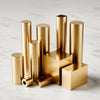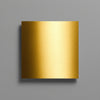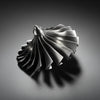
Essential Custom Plastic Machining Services for Industry
Need precise, reliable custom plastic parts? Discover expert custom plastic machining services for tight-tolerance components in aerospace, medical, and more.

Why Precision Machining Is Essential for Modern Robotics
Discover how precision machining for robotics creates hyper-accurate components, boosting performance and efficiency. Learn the essential role of CNC in building the future of automation.

Expert CNC Plastic Fabrication Services for Your Project
Need high-quality custom plastic parts? Our CNC plastic fabrication services offer precision, speed, and a wide range of materials. Get a fast quote today.

CNC Machining for Custom Gears: A Technical Overview
Explore the precision of CNC machining for custom gears. Learn about key processes like hobbing and shaping, material selection, and how to choose the right partner.

CNC Milling vs Turning: Which Service Your Project Needs
Deciding between CNC milling and turning services? Understand the key differences in part geometry, cost, and precision to select the right process for your project.

Strategic Benefits of Local CNC Machine Shops
Unlock the advantages of partnering with local CNC machine shops. Accelerate project timelines, enhance quality control, and reduce hidden costs through direct collaboration.

EDM vs Traditional CNC Machining: Which Process Is Right?
Deciding between EDM and traditional CNC? Uncover the key differences in precision, materials, and complexity to choose the most effective process for your parts.

Essential CNC Machining for Marine Applications Explained
Discover how CNC machining for marine applications delivers the precision needed for critical parts like propellers and shafts to enhance vessel durability.





